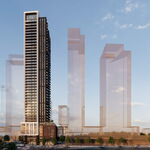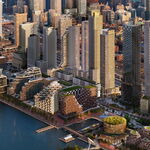London actually has a fairly dense urban form. It sprawls like all cities but also has very large apartment block districts that have high transit ridership. There are no "gaps" in London like get in other cities and much of this id due to London having no urban freeways so the communities within the city are well connected. Statistically it doesn't seem that dense but that is because a third of the city borders on the 401/402 south corridor in a huge annexation in the 1990s. The city of London actually borders the city of St.Thomas.
West of Adelaide I can't think of any gap in the urban form except for along densely populated and very busy Oxford Street and the gap is there because the city wanted it there for any potential rapid transit. The downtown has a surprisingly large and growing population and the downtown has seen a renaissance from the dark days of the 1990s due to the City making rejuvenation a priority and it has paid dividends and people are moving back downtown. Downtown is actually very busy with heavy pedestrian traffic and is surprisingly busy at night as London, due to all the students, actually has a pretty wicked little nightlife.
The LRT route will also go right down Richmond from King to UWO and beyond. Richmond is a high density and high income road. It also has a major hospital, is very walkable and is a destination street. It is one of Canada's nicest streets with big trees, beautiful Victoria Park, a large employment base, and from downtown King to Oxford Street is about 10 blocks of nothing but excellent restaurants, sidewalk cafes, coffee shops, bars, bistros, and some very good and high end shopping engulfed by some beautiful Victorian architecture.






